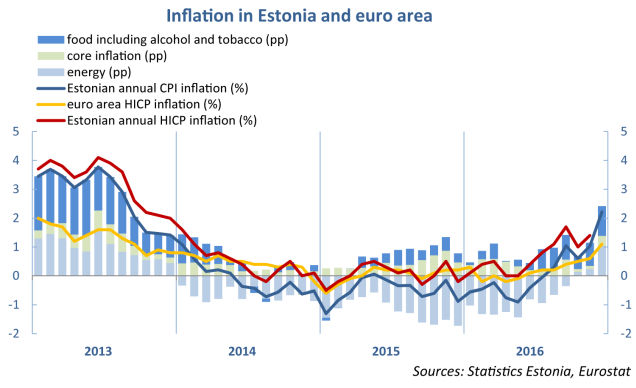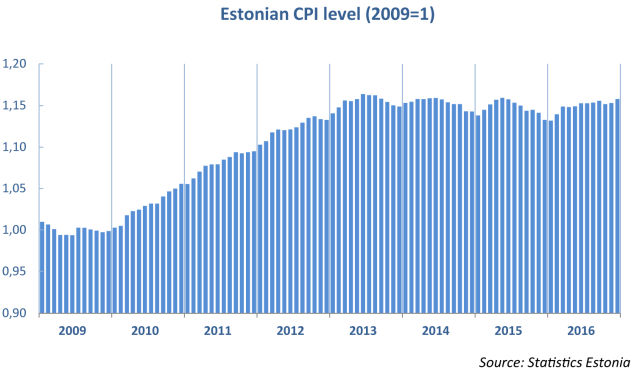Analytics, Banks, Direct Speech, Economics, Estonia, Inflation
International Internet Magazine. Baltic States news & analytics
Sunday, 21.12.2025, 22:12
Inflation was at its fastest of the past three years in December
 Print version
Print version |
|---|
Growth in consumer prices accelerated in December in Estonia and in the euro area. Inflation in Estonia climbed from 1.0% to 2.2% in December, while yearly change in the harmonised index of consumer prices for the euro area reached 1.1% at the same time. Falling prices in the first half of the year meant that average inflation last year remained close to zero at 0.1%. Inflation in December was driven by seasonal factors like it is every year, as prices rose for fruit and vegetables, while alcohol and clothing and footwear were subject to discounts. It is becoming quite usual for there to be a lot of volatility in the price of air tickets, and prices were 30% higher in December than in November, providing half of the inflation in the consumer basket for the month.
In recent months inflation mainly rose because of higher prices for energy. The price of oil started to rise on global markets from the start of last year, and motor fuels rose in price by 20% over the year. At the start of 2016 food commodities also started to become more expensive on world markets. These effects were felt more in consumer prices in the second half of the year, but the rise in prices of food commodities became more broadly based only in the past months of the year. Food products, which includes alcohol and tobacco, were 1.6% higher in price in the year overall.
The state of the Estonian economy favoured higher prices for goods and services last year, but this did not lead to any significant inflation. Relatively rapid wage growth helped increase the purchasing power of consumers, and the increase in employment also helped raise incomes. Core inflation, which is inflation in services and manufactured goods, was low throughout the whole of last year as weak price pressures in the external economy continued to push import prices for manufactured goods down. Acceleration in core inflation was also restrained by increased saving by consumers, which restricted demand-side price pressures.
Inflation is likely to be higher in Estonia in 2017 than the average for the euro area, primarily because of rises in excise. Eesti Pank’s December forecast put average inflation for 2017 at 2.8%










 «The Baltic Course» Is Sold and Stays in Business!
«The Baltic Course» Is Sold and Stays in Business!

